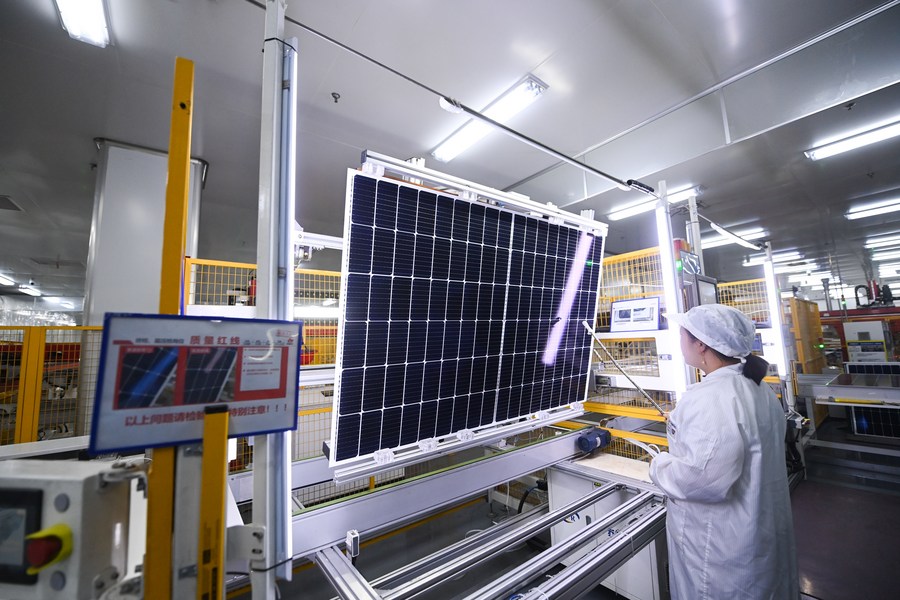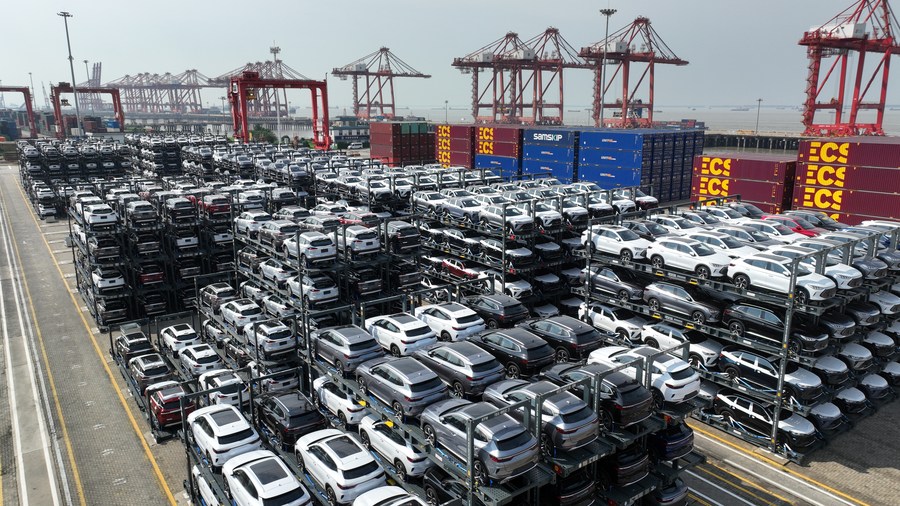BEIJING: China’s economic recovery has continued to gather steam against all odds this year, injecting much-needed certainty and vitality into a global economy that has been clouded by slowing growth and rising geopolitical tensions.
While some sectors in the country are feeling the pinch of economic headwinds from both home and abroad, others are emerging from negative impacts faster and stronger than expected.
The country’s economy expanded 5.2 percent year on year in the first three quarters of the year, marking the strongest performance among the world’s major economies.
Looking beneath the headline GDP data, the following facts and figures reveal the strength, resilience and potential of the world’s second-largest economy, which will generate growth in the year and longer term.
The Chinese economy is on track to achieve its growth target of around 5 percent set for 2023, with many analysts expecting the growth in 2024 to exceed this year.
The economy has shown emerging signs of recovery, and the government has rolled out a flurry of supportive measures to consolidate recovery while fostering new drivers of growth for the longer term.
Although recovery will be accompanied by a wave-like development with many twists and turns, the long-term sound fundamentals of the economy have remained unchanged.
The country’s consumer market, which is underpinned by a population of over 1.4 billion and an expanding middle-income group that exceeds 400 million, will continue to power the country’s economic growth and attract businesses from all over the world.

Tourists shop at a duty-free shopping complex in Haikou, south China’s Hainan Province, July 12, 2023. (Xinhua/Yang Guanyu)
Consumer spending is playing an increasingly important role in driving growth, contributing 83.2 percent to economic growth in the first three quarters.
As the world’s second-largest consumer market and the largest e-commerce market, the country has seen its retail sales beat expectations, with a rise of 7.6 percent in October. Additionally, its express delivery sector has handled a record of 120 billion parcels so far this year, suggesting continuously recovering consumer demand.
In the next 15 years, the country’s middle-income group is expected to exceed 800 million, further driving the development of an enormous market.
The increasingly prosperous population and continued urbanization process mean there is still fairly strong demand for consumption and investment, and these will drive the economy’s long-term stable development.
China’s economy has demonstrated remarkable resilience. It has intensified macro-economic regulation this year to cope with emerging challenges, and maintained overall economic and social stability.
With the policies gradually taking effect, consumer inflation has remained mild, employment has become stable, resident income has grown steadily, and financial risks have been held under control.
The Chinese government’s debt level remains in the middle and lower range internationally, along with a mild inflation, leaving the policymakers with ample policy space and options to maneuver in the event of any unexpected challenges.
Other factors making up the resilience of the economy, especially the industry, include a complete industrial system and rapid technological progress.

A staff member checks photovoltaic modules at the workshop of Hengdian Group DMEGC Magnetics Co., Ltd. in Dongyang City, east China’s Zhejiang Province, April 18, 2023. (Xinhua/Xu Yu)
China is the only country with all the industrial categories listed in the UN industrial classification. Its manufacturing sector topped the world in size for 13 consecutive years in 2022, with the sector’s added value contributing to over 30 percent of the world’s total.
Amid the country’s pursuit for innovation-driven development, high-tech sectors have continued to thrive. The value-added industrial output of the drone manufacturing sector surged 53.2 percent year on year in October, while new energy vehicle production expanded 27.9 percent from one year earlier.
The China Innovation Index, a barometer of the country’s innovation capability, climbed 5.9 percent from one year earlier to 155.7 in 2022, according to the National Bureau of Statistics.
The country’s rising financial input on research and development as well as the talent advantages of a large number of high-quality workers and entrepreneurs also constitute the basis for the economy to forge ahead.
The world is eagerly looking at China for its potential to propel global economic recovery as the country continues to upgrade its economic structure, improve efficiency and further open up.
The tech-intensive green trio — solar batteries, lithium-ion batteries and electric vehicles — have replaced apparel, home appliances and furniture to become the top drivers of China’s foreign trade, and maintained fast expansion. The total export value of these products jumped 41.7 percent year on year in the first three quarters of this year.

This aerial photo taken on July 11, 2023 shows new energy vehicles for export at a terminal of Taicang Port, east China’s Jiangsu Province. (Photo by Ji Haixin/Xinhua)
To achieve a greener energy mix amid its carbon neutrality pursuit, the country’s installed capacity of renewable energy surpassed that of coal power for the first time in June, and went on to account for almost half of the country’s total installed power generation capacity four months later.
Reform measures continued to improve business environment. Administrative procedures are being streamlined to facilitate business activities. A pilot program in Beijing, for instance, can slash the waiting time for permission to open a cinema from 23 days to 5 days, making it easier to start a business.
The country applied the highest standards in implementing the Regional Comprehensive Economic Partnership agreement, and has taken proactive steps to align its economic and trade rules with the high standards of the Comprehensive and Progressive Agreement for Trans-Pacific Partnership and the Digital Economic Partnership Agreement, improved the mechanism for protecting the rights and interests of foreign investment, further reduced the negative list for foreign investment access, and worked hard to break down barriers that restrict the flow of innovation factors.
More and more global business people are now assured of China’s steadfast determination and capability to continuously push forward its opening-up, and increasing investment to tap into the ever expanding market.






















